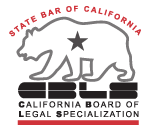When most people think of estate planning, they think about tax issues, trusts, and passing along assets like investments, cars and houses to the next generation. Of course, those topics are at the heart of estate planning, but you can use your plan to address additional assets, too. Intellectual property is one of the non-traditional items you may want to incorporate into your plan.
What Is Intellectual Property?
Simply put, intellectual property (IP) is something you produced through creativity. IP includes inventions, books, poems, music, art, designs, symbols, names and images used in commerce. As the creator of such an item, the law gives you a limited monopoly over its use, enabling you to gain recognition or benefit financially from your creation. The most widely known types of IP are copyrights, patents and trademarks.
How to Protect Copyrights
There are three basic requirements for a work to earn copyright protection:
- It must be a work of authorship
- It must be original
- It must be fixed in a tangible medium of expression
How to Protect Patents
Patents grant an inventor property rights in their invention. Specifically, getting a patent gives you “the right to exclude others from making, using, offering for sale, or selling” the invention in the US. In other words, you get the right to stop others from profiting from your invention.
To be eligible for patent protection, your invention must be useful, new and nonobvious. The two main types of patents are:
- Utility patents: This is what most people think of when they think of patents. It covers inventions and significant improvements to existing things. For example, you can get a patent on a new software program. You can also get a patent on an innovation that makes a car engine perform better.
- Design patents: These protect the ornamental design of a product, i.e. the way the product looks. Products protected by design patents include such diverse items as jewelry, watches, computer icons, and the shapes of beverage containers.
Only the federal government can grant a patent. You must file an application with the US Patent and Trademark Office, which examines the application. If a patent is granted, it usually lasts for 20 years. After that, the item goes into the public domain and can be freely used by anyone.
How to Protect Trademarks
A trademark is a word, name or symbol used to identify a product and distinguish it from competitors. In other words, trademarks protect the brand names of products or services. They don’t protect the products or services themselves, nor do they protect the technology behind them.
You can protect your mark in California or nationwide. If you want nationwide protection, you must register the mark with the USPTO. You must also use the mark in commerce, otherwise it can be considered abandoned. Federal trademarks last 10 years and are renewable.
Including Intellectual Property in Your Estate Plan
To include IP in your estate plan, a professional appraisal is advisable. A realistic, tangible value needs to be placed on the IP. Then, you can decide whether to sell the IP assets during your life or include them in your estate plan. If you decide to include the IP assets in your estate plan, then you and your attorney will decide how to incorporate the assets into your estate plan to keep them out of probate – for example, via an LLC or trust.
If intellectual property is a large part of your estate, you may want to name an executor or trustee who has special knowledge of IP issues. IP is very complex, so specialized knowledge is valuable. For example, after your death, the ownership of the IP will need to be transferred to whomever you named in your estate plan.
Also, your IP may, in the future, shoot up in value. So, during estate planning, you may want to consider giving a percentage of your estate to each heir/beneficiary. That way, they would all benefit equally if the value goes up. If you give all of the IP to one beneficiary, that person could end up with a disproportionately high amount of money.
Get Help Incorporating IP Into Your Estate Plan
If you have trademarks, copyrights or patents to include in your California estate plan, make sure you work with an experienced lawyer who understands the complexities of IP and can call on experts to assist when needed. You’ll find that attorney here at the Law Office of Janet L. Brewer. Call 650-325-8276 or contact us online anytime. We are located in Los Altos.








